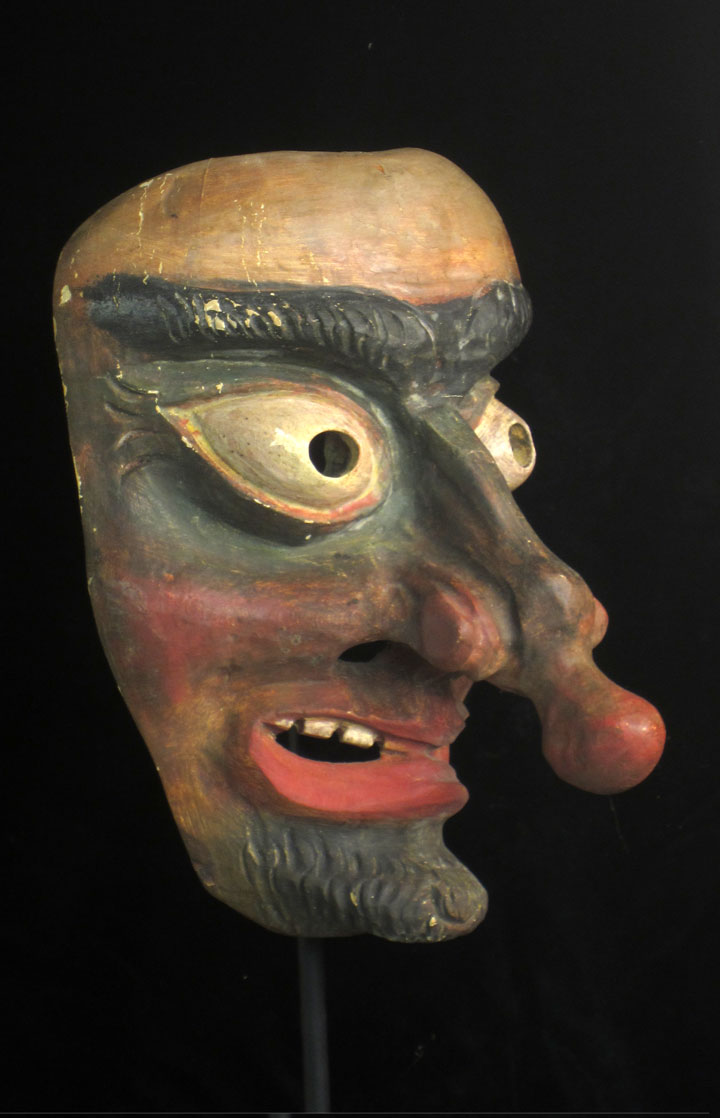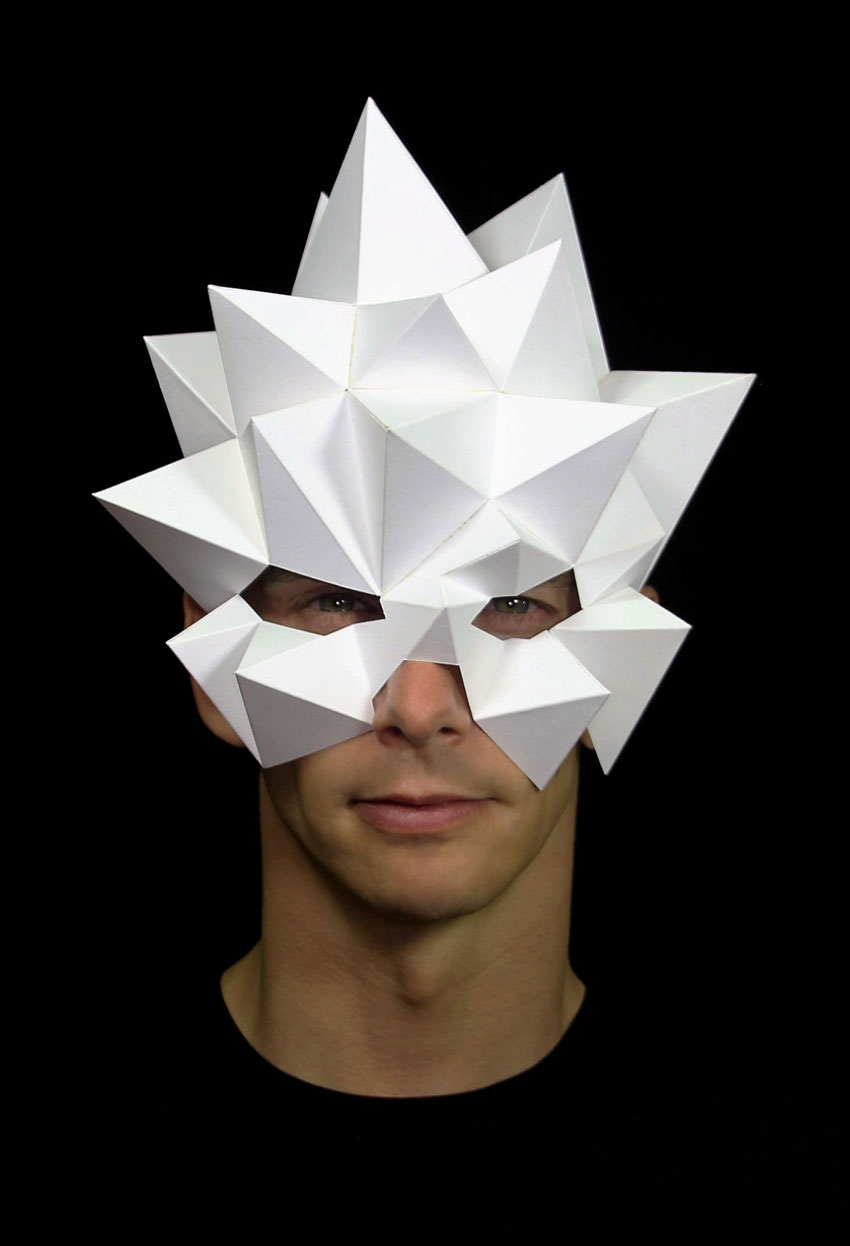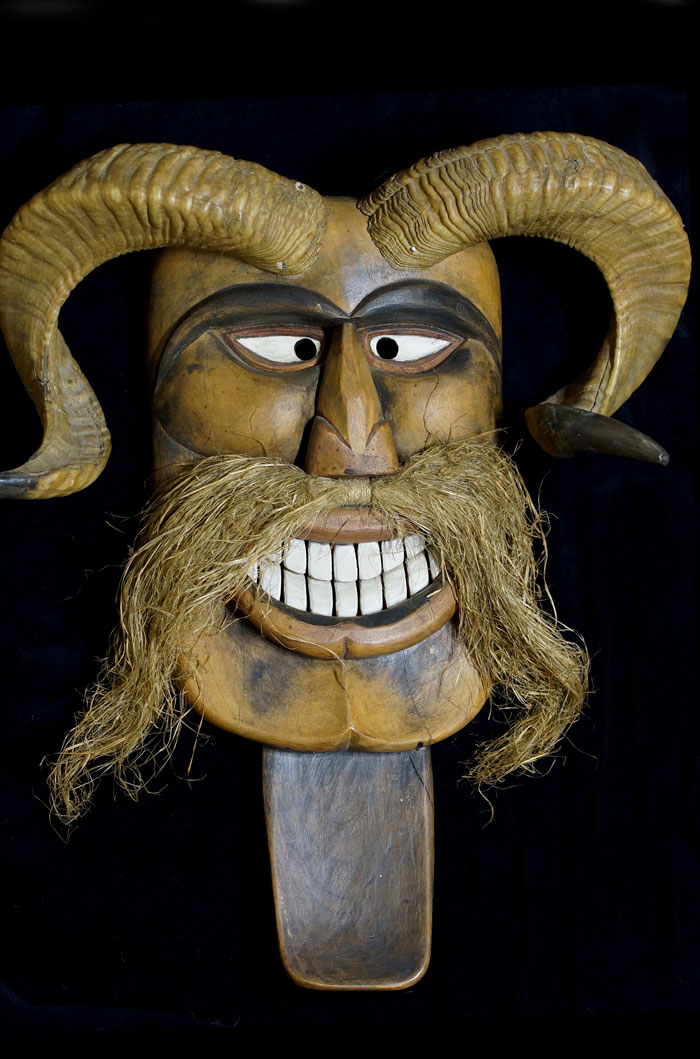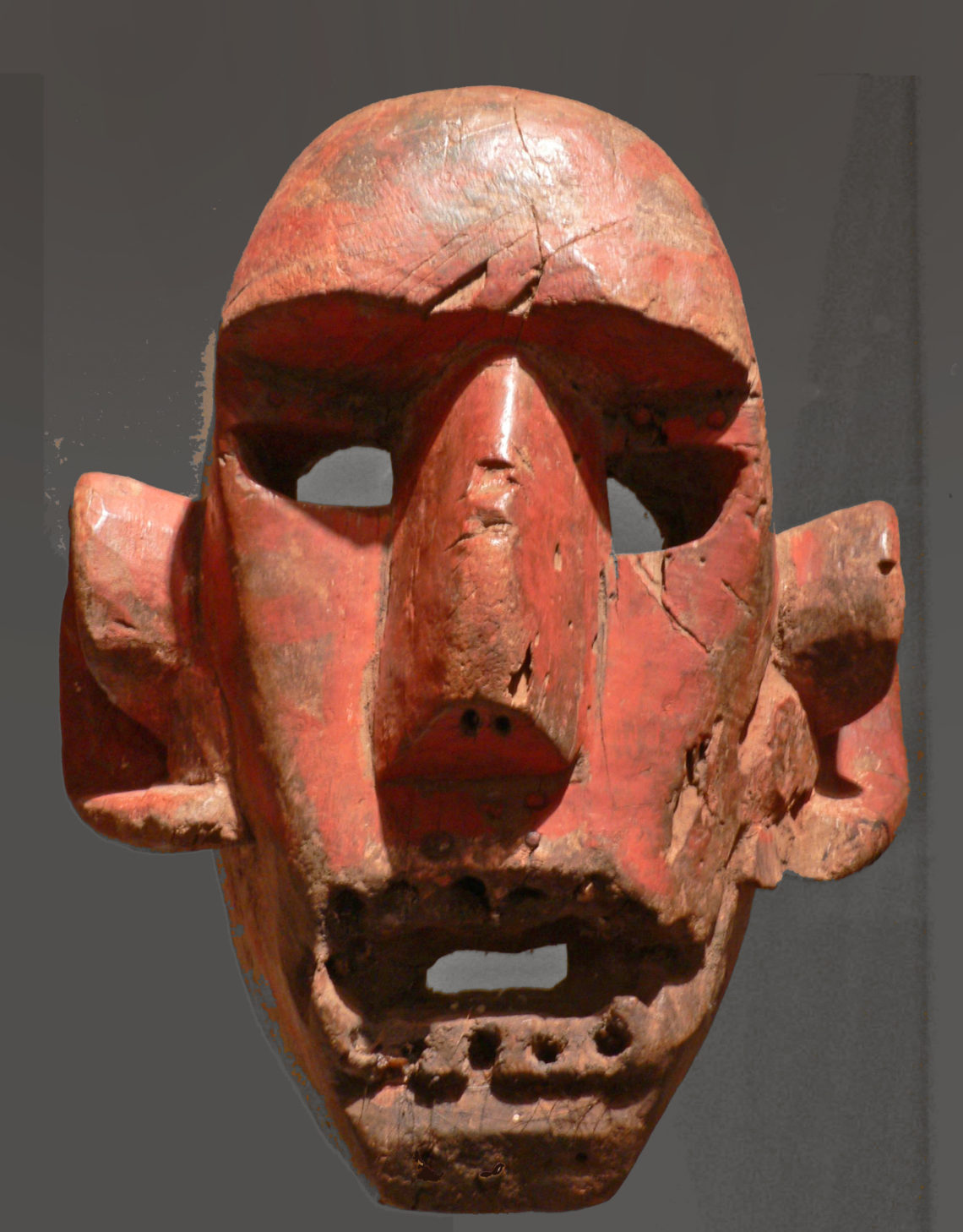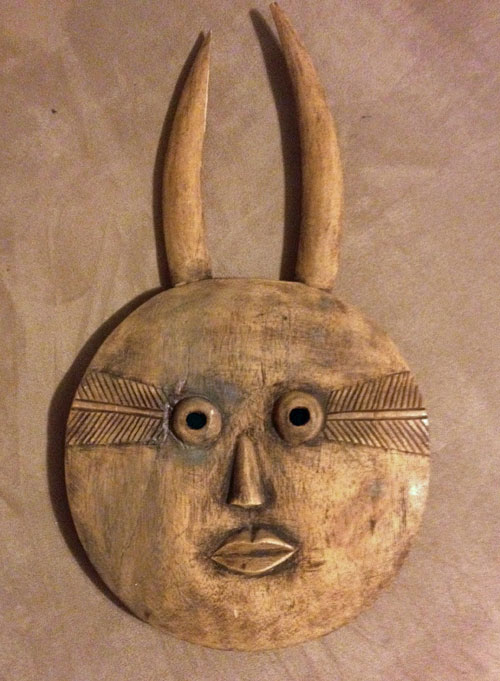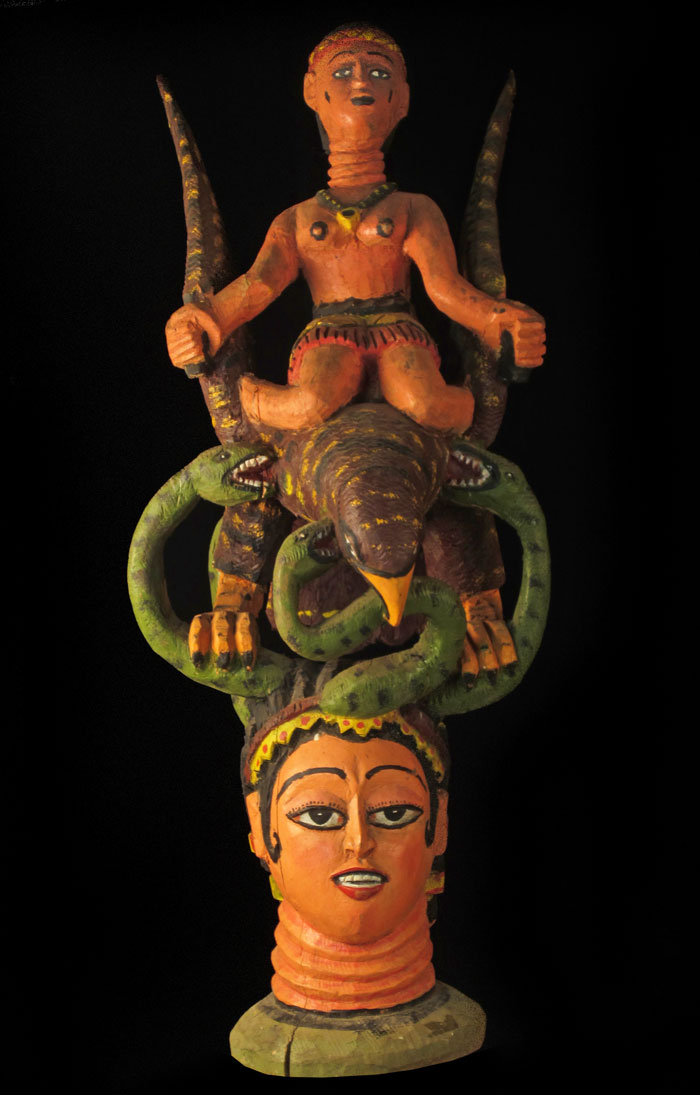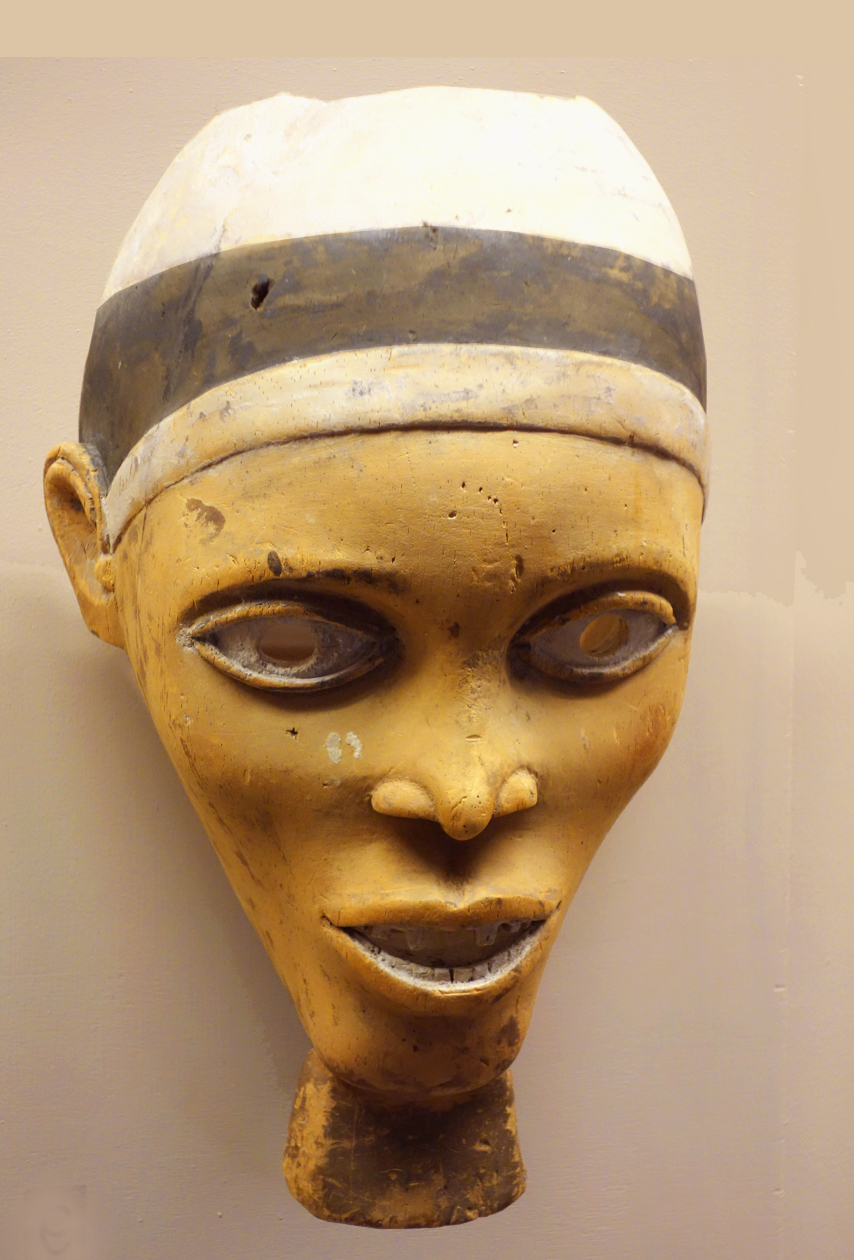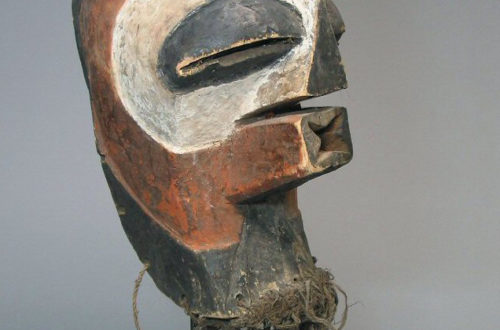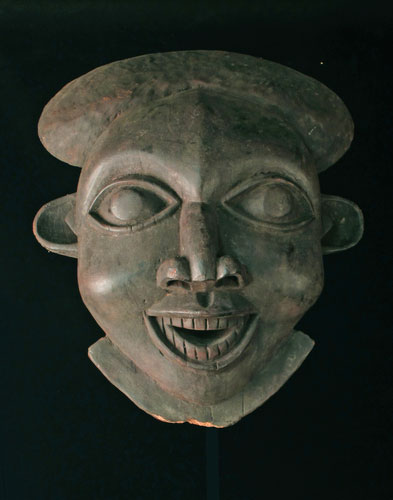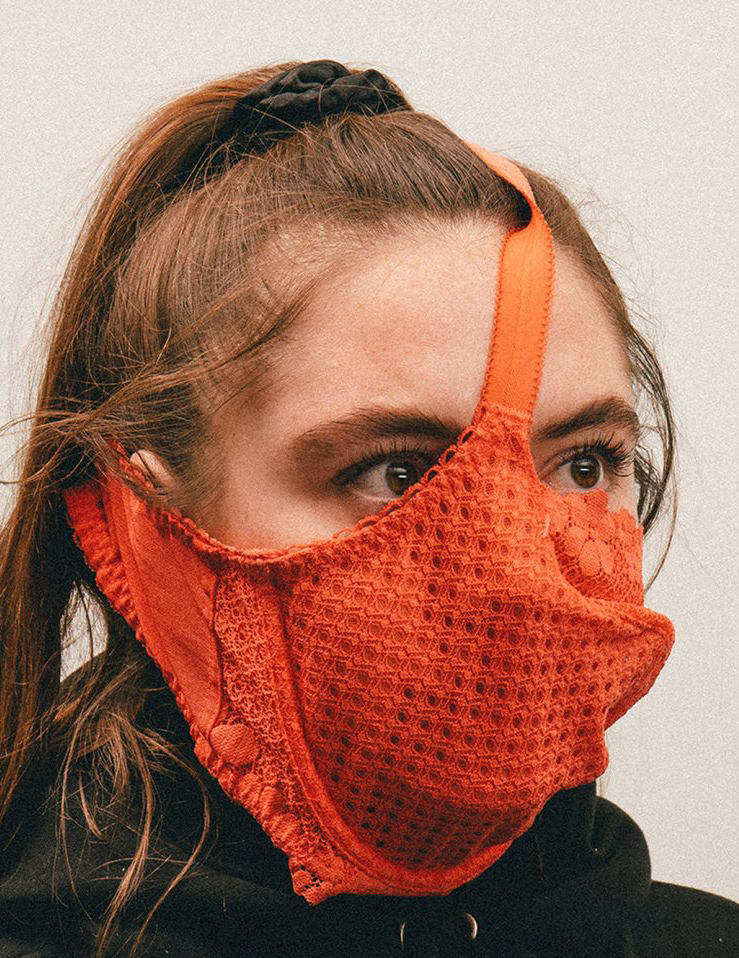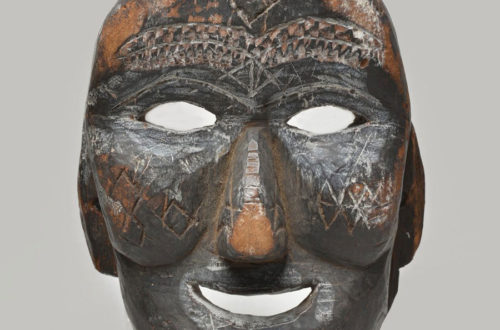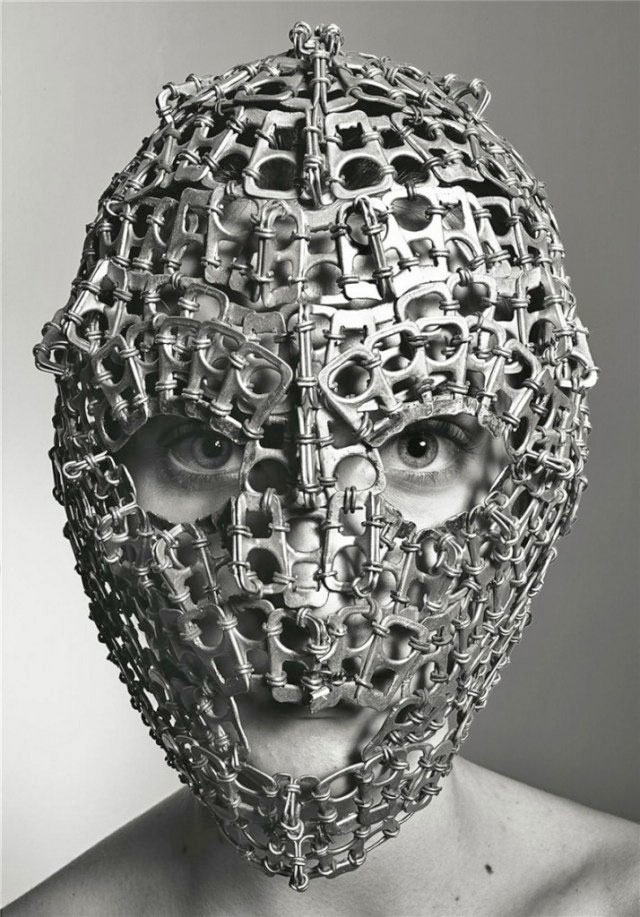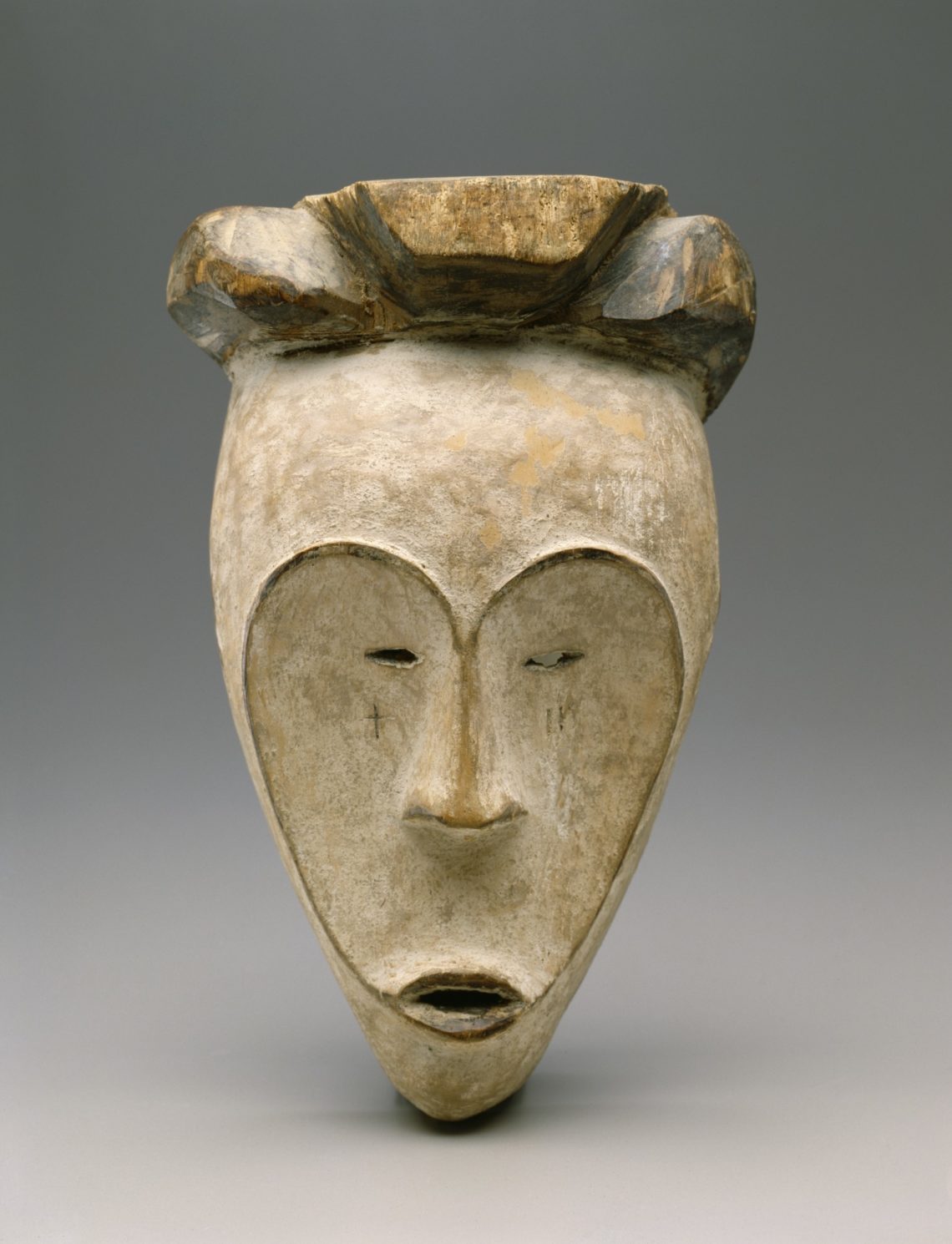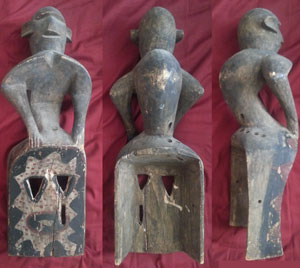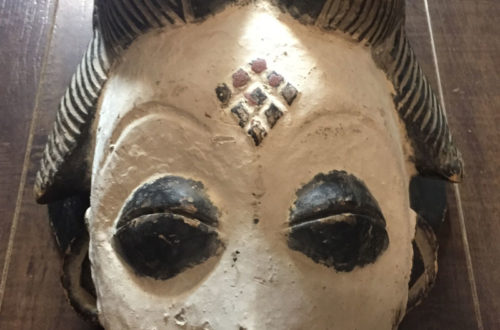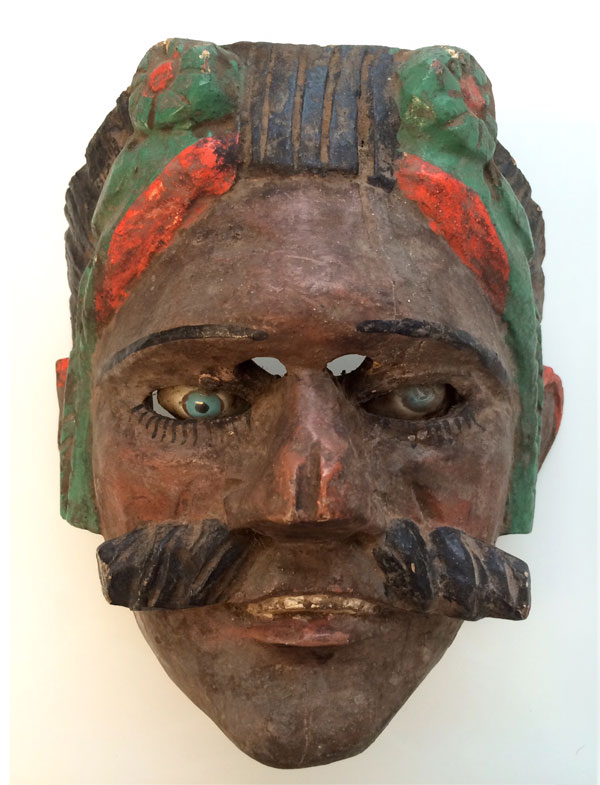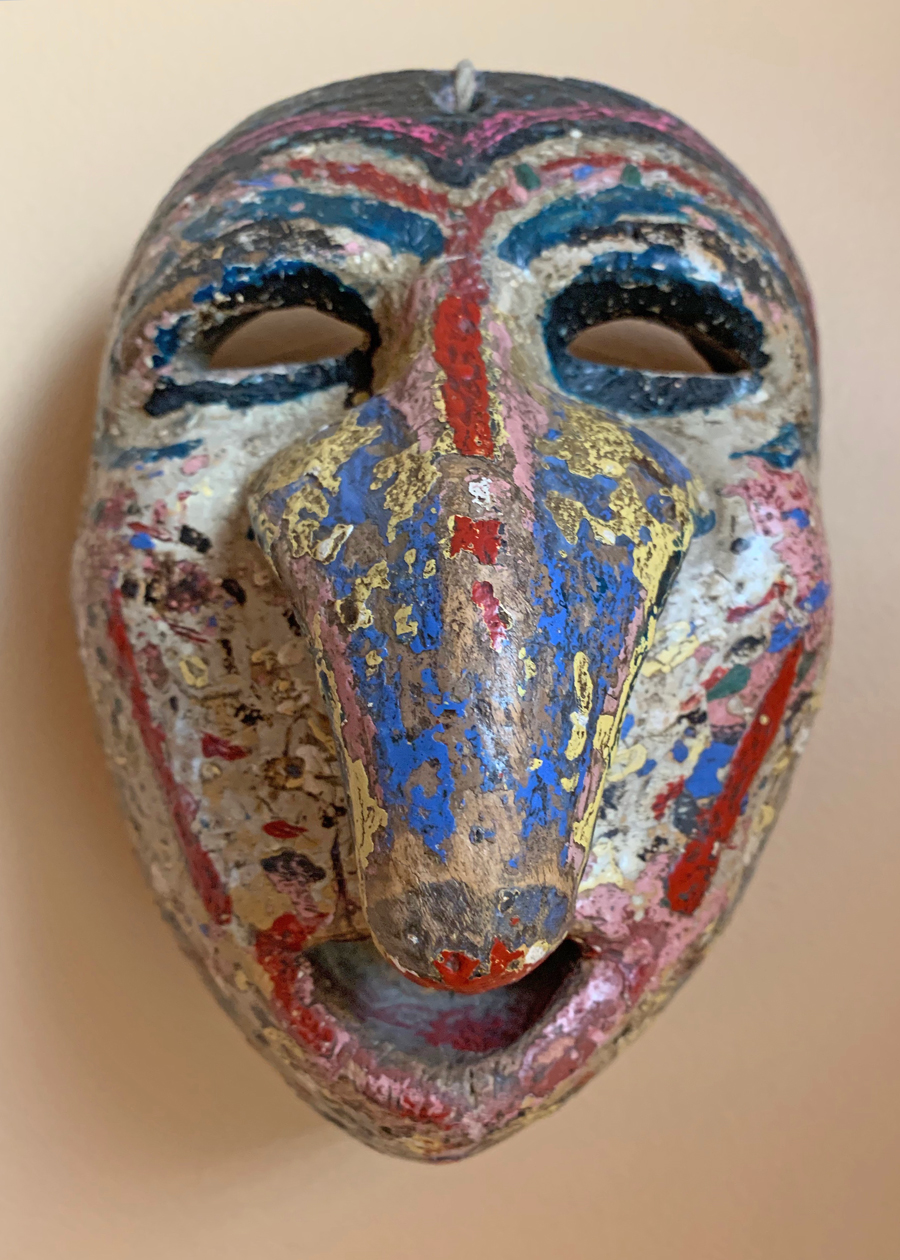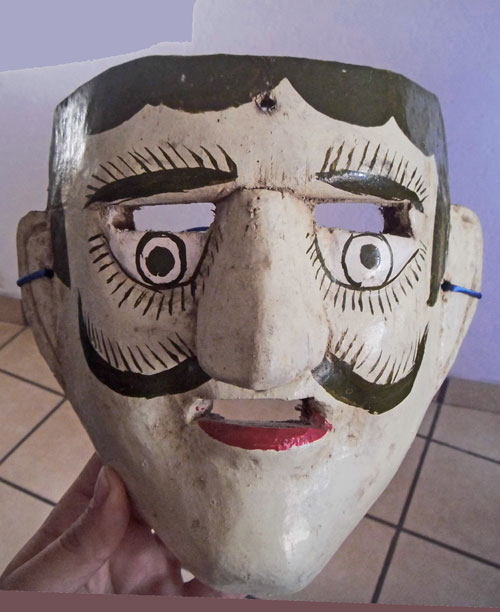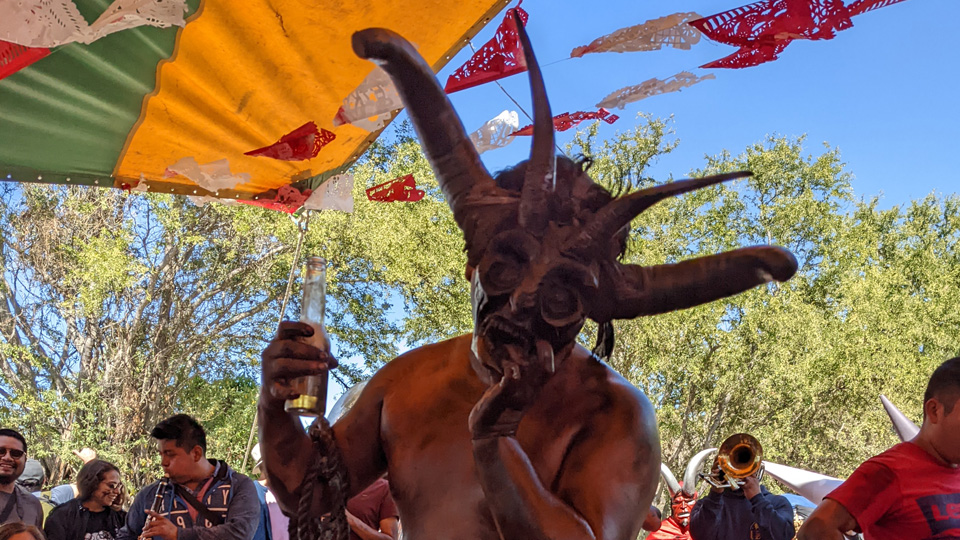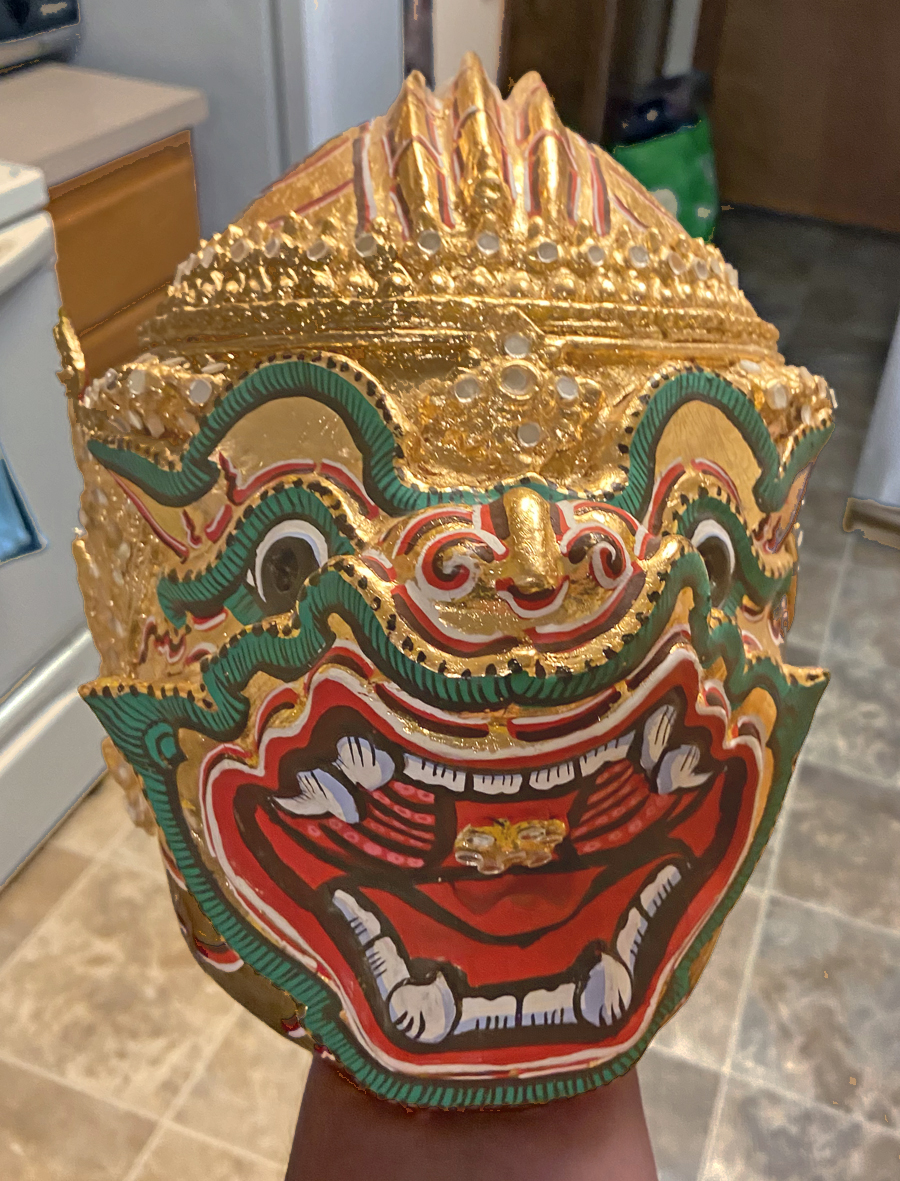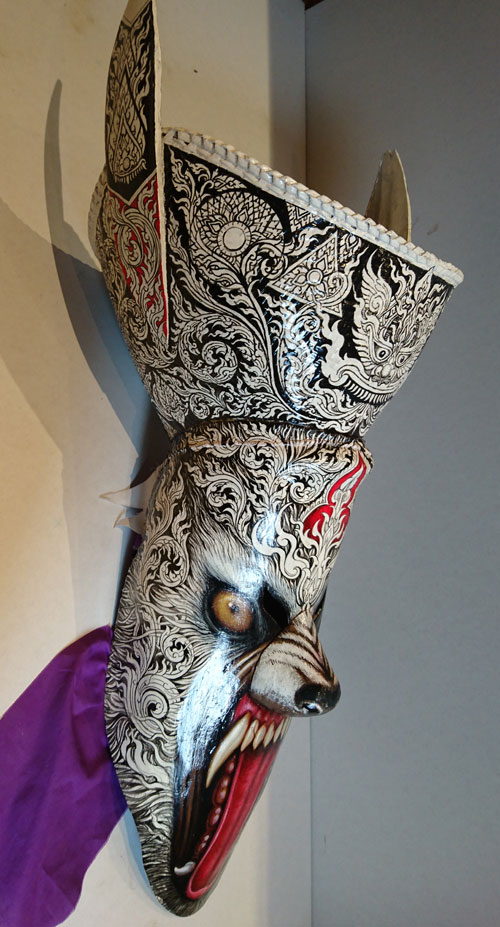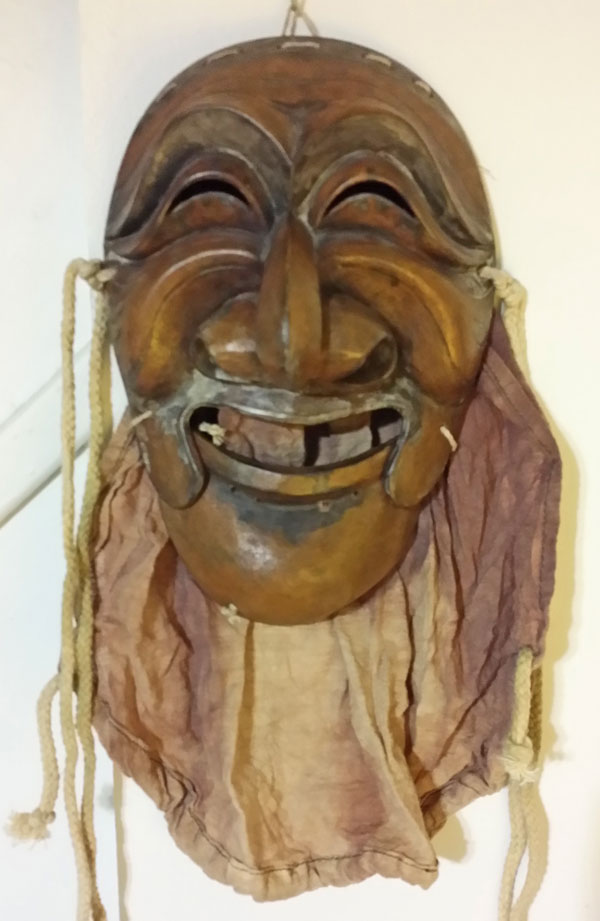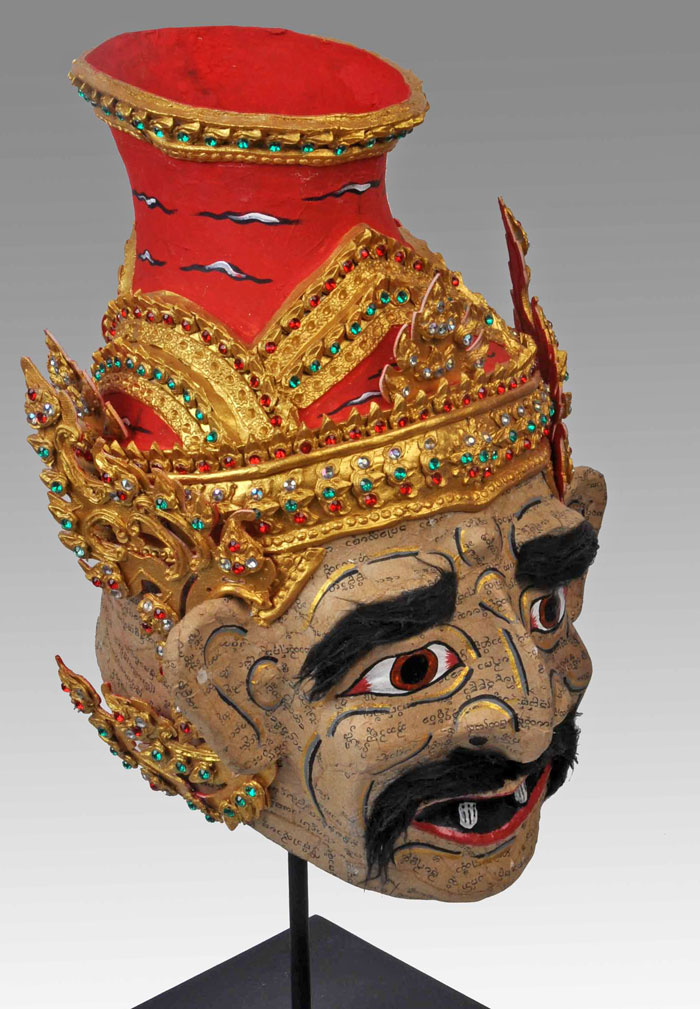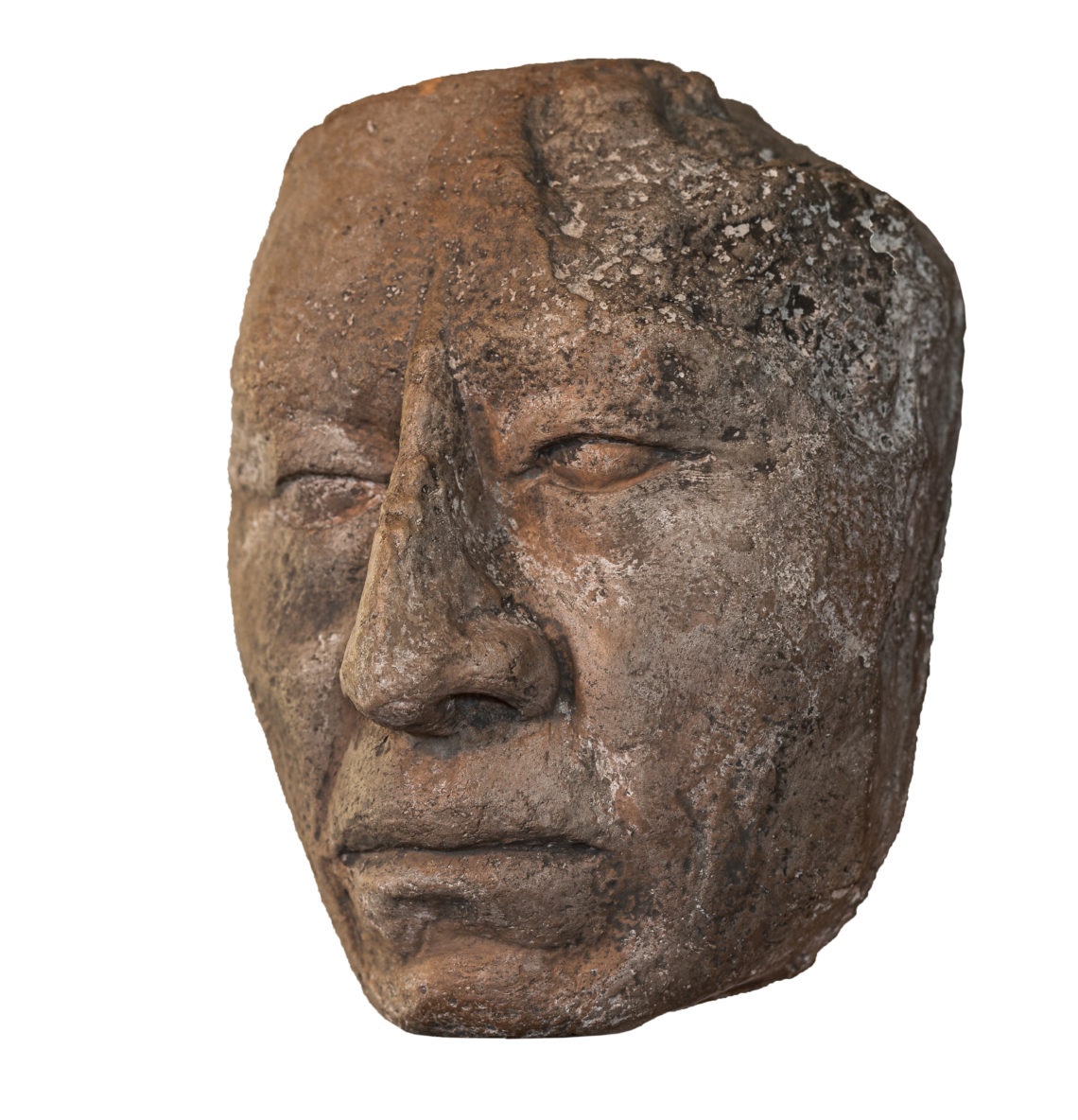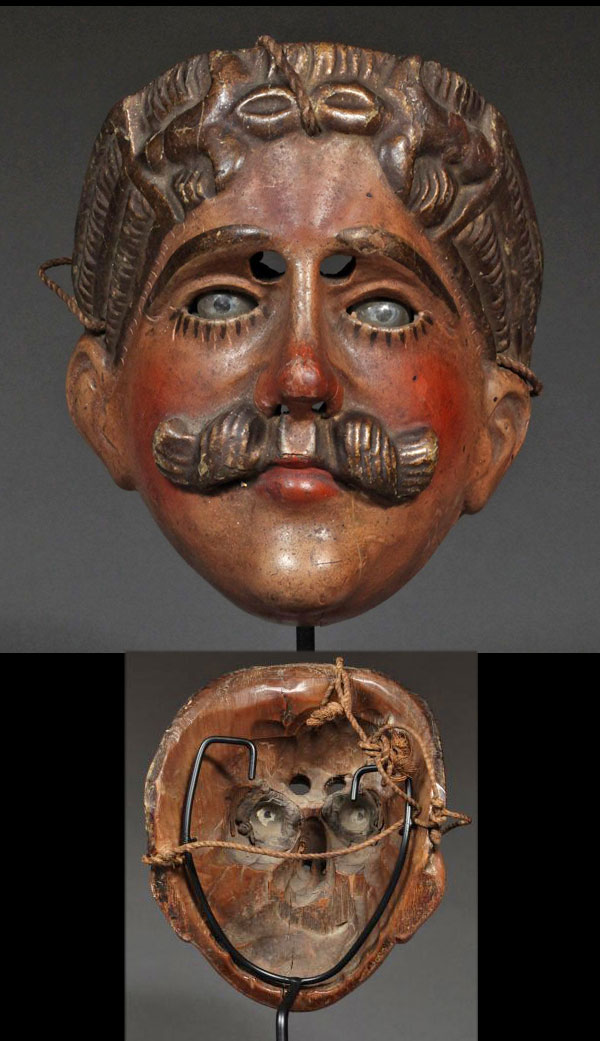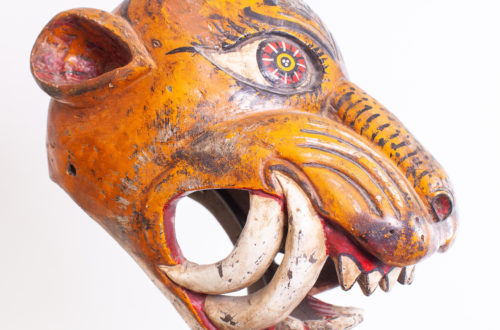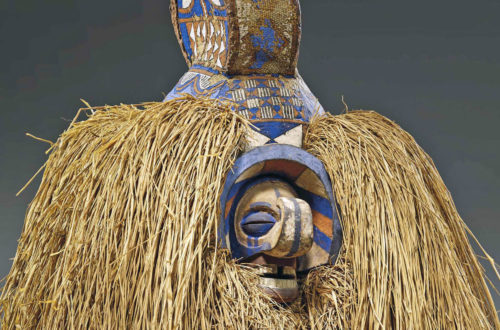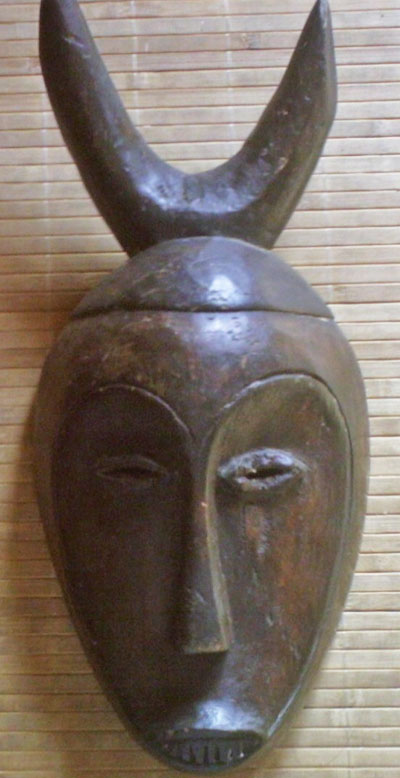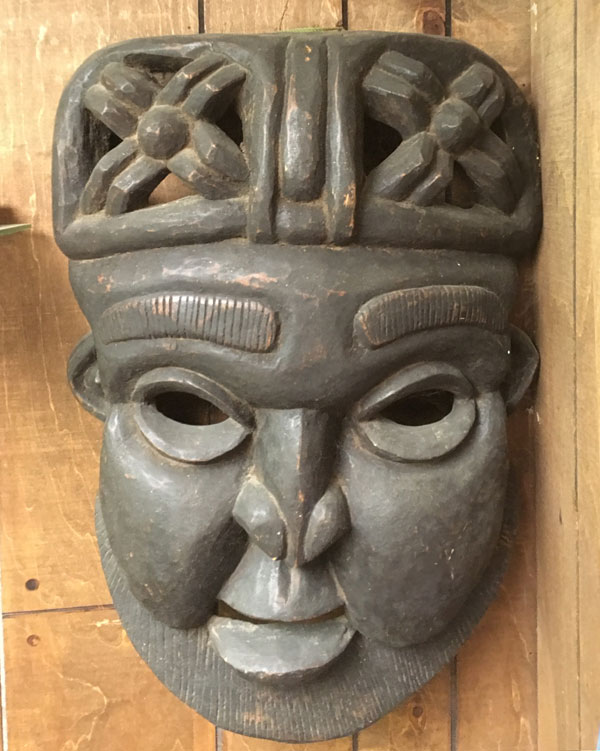From hundreds of years ago to today, this famous mask has been used in Europe and the Americas a lot. They can be made of leather, like this one– or plastic, papiermache, cardboard, etc., plus many different colors and designs. They have always been used in theater, carnivals, parties, holidays and celebrations. They can be found in all sorts of places at almost any price. Always fun to collect, you can gradually work your way up to an older, high-quality mask like ours. If you’re an oldster like me, you might need something to do during the pandemic. Bob, 1758
-
-
Kwere mask from Tanzania
The Kwere people (also called Doei) migrated to what is now Tanzania around 1000 A.D. from south of Mozambique. The Kwere do not have centralized political systems, but instead are based on self-governing matrilineal kin groups. Lineage heads are chosen by community leaders. These leaders are responsible for distributing land and maintaining lineage rituals. Leaders are also in charge of settling disputes between family members and are often attributed with having spiritual powers. Most Kwere believe in mulungu, a god who was associated with rainfall. Most prayers are directed to familial spirits. Religion among the Kwere is a household affair and every family member is responsible for appeasing its ancestral…
-
Yombe mask from DRC
Called a nganga diphomba, this handsome mask would have been made in what was then called the lower Belgian Congo. It is now in the Royal Museum of Central Africa. It was used for many different purposes in ceremonies for the Yombe people. As you can see, the carving is expert, where as the rough chin extension is there for a beard of buffalo hair to be attached. I hope you appreciate this mask as much as I do. The second nganga is a female version from the Brooklyn Museum of Art and was more quickly made and then used much more. Both would get an A. Bob, 1756
-
More pandemic face masks
COVID19 continues to lower the number of mystery masks we receive here at MasksoftheWorld.com. Hopefully a few more of these crazy face masks will brighten your day a little. Bob, 1755
-
African Influences in Modern Art
During the early 1900s, the aesthetics of traditional African sculpture became a powerful influence among European artists who formed an avant-garde in the development of modern art. In France, Henri Matisse , Pablo Picasso , and their School of Paris friends blended the highly stylized treatment of the human figure in African sculptures with painting styles derived from the post-Impressionist works of Cézanne and Gauguin . The resulting pictorial flatness, vivid color palette, and fragmented Cubist shapes helped to define early modernism. While these artists knew nothing of the original meaning and function of the West and Central African sculptures they encountered, they instantly recognized the spiritual aspect of the…
-
Rare Guatemalan mask
Q: It is true that the style could be confused with some primitive masks from other parts of the world. Nevertheless, it is Guatemalan, but so different from the usual designs. No big moustache or sideburns… It is a Xacalcoje, from of the dance of the Xacalcojes in Aldea Chuisuc, a small village in the province of Totonicapán (Quiché highlands). It is cedar hardwood with a beautiful patina on the back. Probably early or mid XX century. To be noted, the “muted smile” as also found on the second one presented on the page devoted to them on the site of the late Bryan Stevens: https://mexicandancemasks.com/?p=3898. Not all Xacalcojes have…
-
Mystery mask from Oaxaca
Q: I bought this mask in Oaxaca in 1976. I have been collecting masks since 1974 and have not seen anything quite like this. Is it a viejito? I’m at a loss. Raul, 1752 A: The state of Oaxaca, on the lower Mexican Pacific coast, makes a lot of different-looking masks. Often they are creative, but still manage to be appropriate for a traditional dance. Note the photo of a collector’s wall full of Oaxacan masks. Many of them I haven’t seen before. This crazy, big-nosed guy is a challenge for me. I have no idea what role he might play in a dance. Mexican masks are my favorites, and…
-
Thai Hanneman mask
Q: I recently inherited a Thailand papier-mâché Hanneman gold painted mask. I’ve seen a few on here. It’s vintage and I was just wondering the worth. Michelle, 1751 A: These “Mystery Mask” blogs help to determine the worth of your mask with an ABCD-grade. This is a not real appraisal, which always requires a fee for dollar-value research and marketing suggestions. Your Hanneman is well made with especially strong papier-mache and good painting for long usage in traditional dances… or the collections of people who can afford them. B+ No charge! IT’S FREE!
-
PreColumbian death mask of Pakal the Great
Q: The test results are ready now. Well, lets both be happy;) Would you like to evaluate now for me, considering it was real? The certificate is added. Robin, 1750 A: News this good only rarely happens at MasksoftheWorld.com. I am so pleased. Viewers can see Robin’s original Q & A dated March 21 of this year by typing in “death mask.” You could also visit sometime Palenque and Mexico City where you will find the burial pyramid and a recreation of the king’s burial chamber at the Museum of Anthropology. Pakal was buried in a colossal sarcophagus in the largest of Palenque’s stepped pyramid structures, the building called Bʼolon…
-
3 African Helmet Masks
These are common throughout Africa. The first mask is from the Suka people of the Democratic Republic of Congo. Covering the dancer’s entire head and resting on his shoulders, it is very rare that African helmet masks would be used for protection in fighting. The second is a Sowei for the women’s Sande Society in Sierra Lione. We posted one called “Sande Society mask for women only” July 16, 2019. You can access it easily. Last is a Lipiko, a mask that is still greatly used in both Mozambique and Tanzania. You can find several on this site. These last two helmet masks are very popular with collectors. There are…

